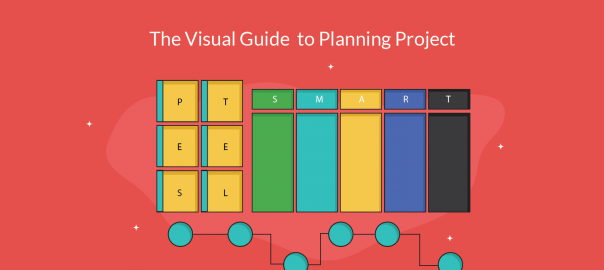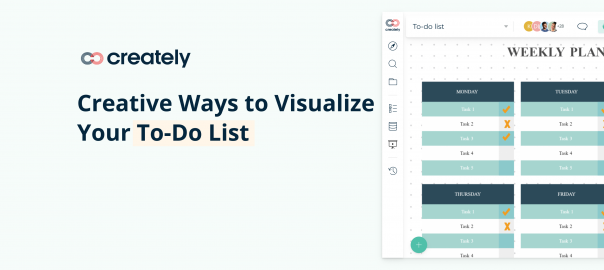Your systematic approach to project management is the substance that holds your entire business operation together. Poor planning can spell death for a project before it even gets underway.
According to Project Management Institute (PMI), project management involves the “application of knowledge, skills, tools, and techniques to a broad range of activities in order to meet requirements of a particular task.”
Due to the immense array of complex and technically challenging projects in today’s business world, developing a strong management template has become an increasingly critical skill.
The harsh truth is that many companies have not yet found an effective rhythm that aligns with their business goals. To put this into perspective, for every $1 billion invested in the United States alone, $122 million is wasted due to lacking project performance.
With this in mind, in order to ensure your project is successful, it is crucial to use SMART in project planning.
Ultimately, including this strategy in your approach should work to answer the 4 Ws.
- What needs to be accomplished?
- Why are we doing this?
- Who will be involved in the process?
- Where will the necessary resources come from?
So how exactly can you use the SMART goals in project management? Let’s dive in.
SPECIFIC
Outline Goals
First and foremost, you need to know the major goals leading towards the big picture and the smaller ones necessary to get there. Take a deep look into the scope of the tasks at hand and identify exactly what you want to accomplish and how it plays into your overall mission.
For instance, let’s say you are initiating a new live chat function on your website. While there will be many smaller goals to ensure the new system is properly implemented, the overall objectives would likely be to improve user support and make it clear you are a brand placing priority on customer success.
Some other overarching goals you might consider throughout any given project might be:
- Completing work in a timely fashion
- Staying within the given budget
- Improving product delivery
For this part of the process, start by thinking big. Setting colossal objectives lays the groundwork for the entire project and makes it easier to stay on track. From here, you get granular on what exactly needs to be done to accomplish the major goals.
For some organizational help, Wunderlist is a simple, yet effective tool to outline the bigger objectives and knock out tasks in a systematic fashion. You can quickly assign people their to-dos, with all updates being managed and synchronized across multiple mobile devices.
MEASURABLE
Create a List of Deliverables
Setting a requirement for deliverables is the life and blood of a project. Take a deeper look, and you will see that deliverables extend far beyond just the results. They serve as reference points for how tasks are planned, managed, and executed from A to Z. In general, there are two types of deliverables to take into consideration throughout project management: Project and Process.
In general, there are two types of deliverables to take into consideration throughout project management: Project and Process.
Project deliverables refer to the outcomes based on specific needs. These are typically tangible items. For instance, if the project is designing a new website, deliverables would include things like landing pages or certain elements completed.
Process deliverables are all about realizing the details of the outcome. This is in relation to the way in which projects are played out. An example would be in regards to how well a project is sticking to the allotted timeframe or the overall quality of the completed work.
Step one would be to identify the project deliverables. How will they be produced? What items take priority?
Next come the process deliverables. What will determine whether or not the project is being completed efficiently? What are the KPIs?
These deliverables act as the blueprint for the entire process. Be sure each is well-defined with a minimal amount of gray area.
ACHIEVABLE
Determine Contribution Disbursement
Plain and simple, without a skilled team, your projects do not stand a chance. However, a top-notch crew is severely comprised without a proper system in place for task disbursement. After all, project management is typically a group effort.
Depending on your goals and size of the operation, there will most likely be a need for interdepartmental collaboration throughout a project. Once tasks have been prioritized, the manager will be responsible for delegating throughout the duration of the project.
For example, let’s say the overarching goal is to improve conversion rates on the website. The process would likely require information about customer support inquiries passed along to the design department to help eliminate the bottlenecks.
Luckily, we live in an era with phenomenal resources available to help streamline these types of tasks and promote open communication.
For effective cross-department collaboration and dependency tracking, Workzone is a function-based project management tool, falling in between the simplistic Basecamp and the complex JIRA, which gives you a full view of all ongoing projects, with ETAs, assigned roles, and statuses of sub-tasks in one place.
REALISTIC
Identify Risk Factors
It doesn’t matter how much prior planning you put into a project, there will almost always be something unexpected that pops up and throws everything off course. So, what does a good project manager do in these situations? They stay calm and keep moving. Why? Because they planned for the unexpected!
For example, if you are working with a new team, a common risk would be that people aren’t fully versed in the procedures and certain factors could slip through the cracks. Another big one could be in relation to the client. Maybe you have never worked with them before and are unfamiliar with their dynamics or expectations.
Start by identifying all your unknowns. From there, brainstorm as many potential risks as you can. Play a worst case scenario. Then develop a protocol on what to do should these issues present themselves again.
Now, it would be impossible to plan for each and every potential hazard that could wreak havoc on your operation. Developing a solid plan to counter hiccups is the equivalent of using a safety net to make sure issues don’t morph into full-blown disasters.
TIMED
Set Timelines
Creating deadlines inevitably prompts a sense of urgency amongst workers. The most important thing to do here is to be realistic. The stress of meeting ridiculous timelines can result in workers getting disgruntled, or quality being sacrificed for speed.
Conduct a thorough study of the project and everything it entails. The more detailed this process is, the more accurate the timelines will be.
Consider implementing Gantt Charts in the early stages of your business. These diagrams are one of the most popular and effective templates to convey the progress of the project and milestones achieved. Every job is represented by a bar corresponding to a date range so the duration of the task is clearly communicated.
An understanding of project management systems and processes, as well as variables and risk involved, is critical for preparing accurate Gantt charts. Creately offers Gantt Charts equipped with this function so you can easily set up timeframes for completion and associate them with milestones and dependencies.
It also doesn’t hurt to let your staff decide the timelines, as long as the metrics are within reason. For example, if you are adding full-fledged eCommerce functionality to your company website, there will most likely be a number of activities, integrations, and inputs required from multiple departments – just look at all the bits and pieces that make up eCommerce. Start by letting the design and development teams choose tentative dates for collecting the information required.
Once you have nailed down timelines, do your best to stick to them. Make sure they are well-known and marked on everyone’s calendar. Also, prepare yourself to be an enforcer. Being overly lenient will only encourage procrastination and underperformance.
What Do You Think of SMART in Project Planning?
Using SMART in project management is one of the best ways to ensure success. However, regardless of how well each task is premeditated, it will probably take a few attempts for your team to fully hit their stride. Make it a point to provide critical feedback. Upon completion, it never hurts to sit down and assess what went well and what can be improved upon in the future.
Do you have experience in using SMART goals in project planning? Any other tool you use to streamline your project? Let us know in the comment section below.
Author Bio
Raymond Crain is a digital marketer at E2M, a content marketing agency based in San Diego, California. He specializes in Content Marketing and Social Media Marketing services.








